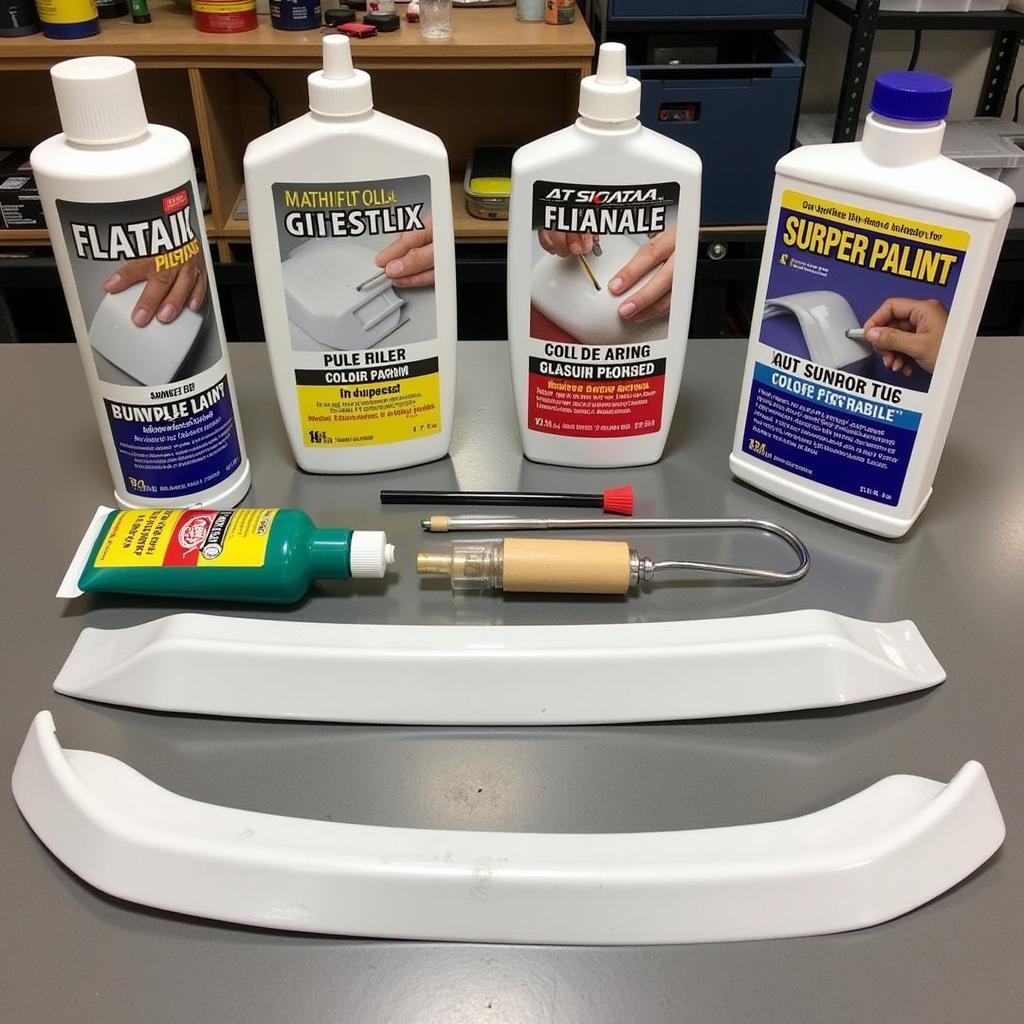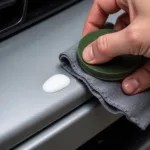Thinking about buying a plastic car bumper repair kit? Minor bumper damage can be an eyesore, and professional repairs can be expensive. A DIY repair kit offers a cost-effective solution, allowing you to restore your bumper’s appearance without breaking the bank. This guide will explore everything you need to know about selecting and using a plastic car bumper repair kit.
Choosing the right plastic car bumper repair kit can seem daunting with so many options available. Do you need a car bumper repair filler or a car bumper repair pack? What type of plastic is your bumper made of? These are important questions to consider. This guide will walk you through the process, from assessing the damage to achieving a professional-looking finish. We’ll cover the different types of kits, the tools you’ll need, and step-by-step instructions for a successful repair.
Understanding Your Bumper Damage
Before you buy plastic car bumper repair kit, assess the damage. Is it a small crack, a deep gouge, or a dent? The extent of the damage will determine the type of kit you need. For minor scratches and scuffs, a simple filler and paint kit might suffice. For more significant damage, a kit with reinforcing mesh and adhesive might be necessary.
Choosing the Right Plastic Car Bumper Repair Kit
There are various types of plastic car bumper repair kits on the market. Some are designed for specific types of plastic, while others are more universal. Look for a kit that’s compatible with your bumper’s material. Common types include polypropylene (PP) and thermoplastic olefin (TPO). A car bumper repair pack often contains everything you need for a complete repair, including filler, sandpaper, primer, and paint.
Tools You’ll Need
Besides the kit itself, you’ll need a few additional tools. These might include:
- Safety glasses and gloves
- Masking tape and paper
- A heat gun or hairdryer (for certain types of plastic)
- A putty knife or spreader
- Sandpaper (various grits)
- Cleaning solution and rags
Step-by-Step Repair Guide
- Clean the area: Thoroughly clean the damaged area with soap and water, then degrease it with a suitable cleaning solution.
- Prepare the surface: Sand the damaged area to create a rough surface for the filler to adhere to.
- Apply the filler: Mix the filler according to the kit’s instructions and apply it to the damaged area, using a putty knife or spreader to smooth it out.
- Sand and shape: Once the filler is dry, sand it down to match the contour of the bumper.
- Prime and paint: Apply primer to the repaired area, then paint it to match your car’s color. A car bumper repair filler might require specific paint types, so consult the kit’s instructions.
- Finish: Apply a clear coat to protect the paint and give it a glossy finish.
What if the Damage is Extensive?
For extensive damage, it’s best to consult a professional. While a DIY kit can handle minor repairs, severe cracks or structural damage require specialized tools and expertise.
“When dealing with complex bumper damage, DIY repairs may not be sufficient,” says automotive expert, John Miller, ASE Certified Master Technician. “A professional can assess the underlying structure and ensure a safe and lasting repair.”
Conclusion
Buying a plastic car bumper repair kit can save you money and time on minor bumper repairs. By following the steps outlined in this guide and choosing the right kit, you can achieve professional-looking results. Remember to always prioritize safety and consult a professional if the damage is beyond the scope of a DIY repair.
FAQ
- Can I use a plastic car bumper repair kit on any type of plastic? No, ensure your kit is compatible with your bumper’s plastic type.
- How long does the repair take? The drying and curing times vary depending on the kit and environmental conditions.
- What if I can’t find the exact paint color for my car? Most auto parts stores can mix custom-matched paint.
- Do I need to remove the bumper for repair? Not always, but removing it can provide better access and results.
- How can I prevent future bumper damage? Park carefully, avoid hitting curbs, and be mindful of low-clearance obstacles.
- Can I repair a dented bumper with a repair kit? Yes, some kits are specifically designed for dent repair.
- What is the average cost of a plastic car bumper repair kit? Prices range from $20 to $100 depending on the kit’s contents and quality.
“Investing in a quality plastic car bumper repair kit can save you hundreds of dollars compared to professional repairs,” adds Sarah Thompson, Lead Collision Repair Technician at AutoCare Solutions. “It’s a valuable skill to have for any car owner.”
For further information on car care and maintenance, explore our other helpful articles on our website. Check out our guides on maintaining your car’s paintwork and tips for preventing common car problems.
Need assistance? Contact us via WhatsApp: +1(641)206-8880, or Email: cardiagtechworkshop@gmail.com. Our customer service team is available 24/7.


